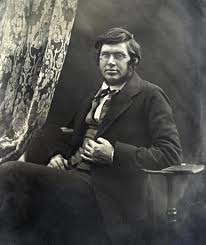 An English gentleman and naturalist, Charles Robert Darwin (1809-1882). The man who transformed our understanding of the natural world with his revolutionary ideas. A man who fought against the Anglican church so his theory may be heard. Evolution by natural selection – that all species of life had descended over time from common ancestors. History has vindicated him, and he is now celebrated as one of the greatest and most innovative scientists who ever lived.
An English gentleman and naturalist, Charles Robert Darwin (1809-1882). The man who transformed our understanding of the natural world with his revolutionary ideas. A man who fought against the Anglican church so his theory may be heard. Evolution by natural selection – that all species of life had descended over time from common ancestors. History has vindicated him, and he is now celebrated as one of the greatest and most innovative scientists who ever lived.
Charles Darwin was born on the 12th February 1809 in Shrewsbury, Shropshire, England. As a child he was described as a keen explorer of all living things. Even then fascinated with how each species became, what each living thing was and where they come from.
As Darwin was growing up, he became more focused on being able to answer these questions. He delved into various nature books, devoting a lot of his time into further exploring the fields which surrounded his home, collecting plants and insects.
 It was then Darwin took his first steps into the study of theology. He attended Cambridge University and graduated four years later. Darwin was not in a hurry to run to Holy order though, and set off on a journey that was to change his life, and the world of science.
It was then Darwin took his first steps into the study of theology. He attended Cambridge University and graduated four years later. Darwin was not in a hurry to run to Holy order though, and set off on a journey that was to change his life, and the world of science.
The journey was to last for five years, voyaging on HMS Beagle. It was 1836 when Darwin returned to London to start work on his collection of specimens.
Darwin had collected some finches from the Galápagos Islands, which had helped him formulate his idea. While some had stout beaks for eating seeds, others were insect specialists. Darwin realised they were descendents of one single ancestor. As they dispersed to different islands, the birds adapted to eat the various foods available. Natural selection had produced 13 different species.
Darwin knew his ideas about natural selection wouldn’t be accepted so easily. He delayed publishing his theory for 15 years. Un-confident at that time, faced against a powerful opposition, he built up a large amount of supporting evidence to back his theory. He also sought advice from Cambridge professors, pig breeders and pigeon fanciers.
It wasn’t until a letter arrived at Darwin’s home in 1858, that he was ready to fight for his theory and get it published. A young naturalist, Alfred Russel Wallace, wrote to Darwin in support of his theory. Wallace provided his own idea’s in relation to Darwin’s theory. Darwin, scrupulously honest, volunteered to send Wallace’s ideas to a journal for immediate publication. However, his friends advised that the fairest solution would be a joint announcement.






